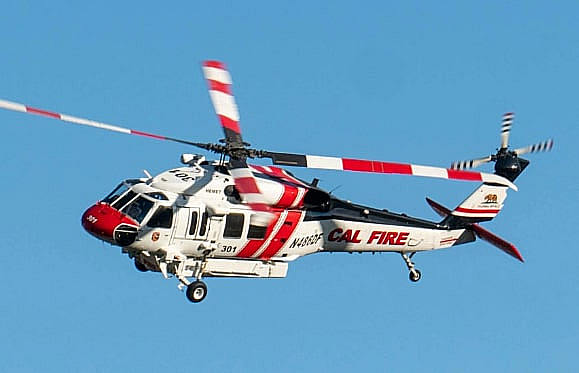S70 Sikorsky Maintenance: Best Practices for Longevity
S70 Sikorsky Maintenance: Best Practices for Longevity
Blog Article
A Detailed Check Out the Design and Performance of the S70 Helicopter
The S70 helicopter has actually long been considered a workhorse in the world of rotorcraft, prized for its toughness, versatility, and adaptability to numerous goals across the world (s70 sikorsky). As we look into the details of its layout and performance, a much deeper understanding emerges of the careful engineering that underpins its abilities in both noncombatant and army applications. From its transformative journey to the intricacies of its wind resistant layout, the S70 helicopter stands as a testimony to accuracy engineering and functional quality. However what collections this aircraft apart from its counterparts, and exactly how does its performance measure up in the competitive landscape of modern rotorcraft? Let us discover these elements in information to reveal the real essence of the S70 helicopter.
Development of the S70 Helicopter

The advancement of the S70 helicopter traces a path of technical developments and layout enhancements that have actually solidified its reputation as a reliable and flexible airplane in various functional capabilities. Initially created from the UH-60 Black Hawk platform, the S70 has actually gone through substantial modifications to satisfy the diverse needs of army, search and rescue, and industrial drivers. Among the essential landmarks in its evolution was the unification of sophisticated avionics systems, such as digital glass cockpits, improved navigating abilities, and mission-specific tools combination.
Furthermore, the S70 has seen continuous improvements in its powerplant, transitioning to more fuel-efficient engines with boosted power outcome, leading to boosted efficiency and operational array. Architectural improvements, consisting of the comprehensive use wind resistant refinements and composite materials, have not only minimized weight yet likewise enhanced maneuverability and fuel efficiency. These innovations have enabled the S70 to adjust to evolving operational demands while maintaining its reputation for longevity and mission preparedness.
Aerodynamic Layout Attributes
With an emphasis on maximizing performance and efficiency, the wind resistant style features of the S70 helicopter play a vital function in enhancing its maneuverability and stability throughout different objective circumstances. The S70 incorporates numerous essential aerodynamic aspects to achieve these goals.
Another noteworthy wind resistant attribute of the S70 is its sophisticated airframe construction, which includes wind resistant fairings and shapes that optimize air flow around the airplane. This layout reduces disturbance and improves control responsiveness, especially in difficult climate condition. In addition, the S70's tail blades design enhances stability and control, making it possible for accurate maneuvering in restricted areas or during intricate objectives.
Advanced Avionics and Solutions
Structure upon the aerodynamic design attributes that maximize the S70 helicopter's efficiency and efficiency, the focus now moves to the advanced avionics and systems that enhance its functional abilities. The S70 helicopter is outfitted with cutting edge avionics systems that provide pilots with real-time data and improved situational recognition. These systems consist of innovative communication systems, navigation devices, and mission-specific sensing units that guarantee accuracy in numerous functional atmospheres.
Among the vital features of the S70's avionics suite is its electronic auto-pilot system, which makes it possible for the helicopter to autonomously carry out intricate trip maneuvers with a high level of precision - s70 sikorsky. In addition, the helicopter is furnished with an advanced glass cabin display that integrates all vital flight details right into a centralized, easy-to-read style, enhancing pilot decision-making capabilities
In Addition, the S70 helicopter's advanced systems extend past fundamental avionics, including sophisticated innovations such as terrain awareness and warning systems (TAWS), traffic collision evasion systems (TCAS), and climate radar systems. These sophisticated avionics and systems jointly add to the S70 helicopter's reputation as a extremely qualified and flexible airplane in both civilian and armed forces applications.
Goal Capacities and Flexibility
Demonstrating its versatility across a varied variety of functional circumstances, the S70 helicopter showcases outstanding mission abilities and versatility. Whether deployed for search and rescue missions, clinical evacuations, regulation enforcement operations, or armed forces transportation, the S70 masters meeting the demands of various goals with accuracy and reliability.
Furnished with cutting edge avionics and systems, the S70 helicopter flaunts official website a durable design that permits seamless integration of mission-specific devices. Its functional cabin layout and customizable arrangements make it a preferred option for drivers seeking a multi-role airplane that can quickly adjust to progressing goal needs.
The S70's innovative maneuverability and dexterity better enhance its operational effectiveness, permitting it to browse challenging settings easily. Its capability to operate in diverse weather conditions and terrain types makes sure that goals can be performed effectively, also in one of the most requiring situations.
Efficiency Requirements and metrics

Equipped with sophisticated avionics and communication systems, the S70 makes sure ideal situational awareness and smooth assimilation with modern-day command and control networks. Its twin-engine setup provides redundancy and improves safety and security throughout essential objectives. Furthermore, the helicopter's capacity to run in challenging climate condition and high elevations even more emphasizes its reliability and performance.
In regards to endurance, the S70 can continue to be airborne for up to 2.5 hours, allowing for prolonged goals without endangering performance. On the whole, the S70's performance metrics and requirements setting it as a leading selection for various armed forces, search and rescue, and energy operations.
Conclusion
To conclude, the style and efficiency of the S70 helicopter showcase an amazing advancement in the rules of aerodynamics, avionics, and mission capabilities. With innovative functions and specs, this helicopter supplies flexibility and effectiveness in various objectives. Its ingenious layout and efficiency metrics show a commitment to excellence in the field of air travel.

Report this page